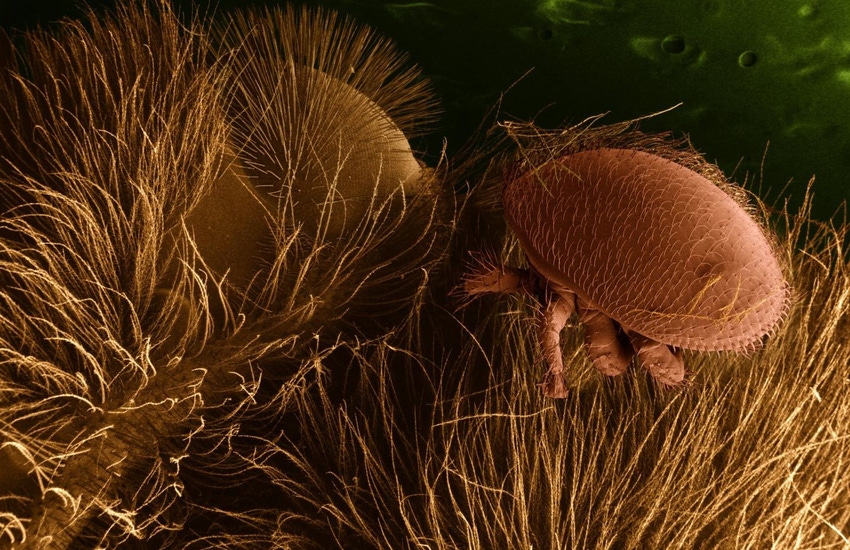Some commercial beekeeping practices may harm honeybees more than help them.
August 29, 2017

Some commercial beekeeping practices may harm honeybees more than help them, scientists warned in a paper published in the journal Nature Ecology & Evolution.
"Western honeybees — the most important pollinators for U.S. food crops — are facing unprecedented declines, and diseases are a key driver," said Berry Brosi, an evolutionary biologist at Emory University and a lead author of the review paper. "The way commercial operations are managing honeybees might actually generate more damaging parasites and pathogens by creating selection pressure for higher virulence."
The paper draws on scientific studies to recommend ways to reduce disease impacts, such as limiting the mixing of bees between colonies and supporting natural bee behaviors that provide disease resistance. The paper also highlights honeybee management practices that are in need of more research.
During the past 15 years, ecological and evolutionary approaches have changed how scientists tackle problems of infectious diseases among people, wildlife and livestock.
"This change in thinking hasn't sunk in with the beekeeping field yet," Emory evolutionary biologist and co-lead author Jaap de Roode explained. "We wanted to outline scientific approaches to help understand some of the current problems facing beekeepers, along with potential control measures."
Co-authors of the paper include Keith Delaplane, an entomologist at the University of Georgia, and Michael Boots, an evolutionary biologist at the University of California-Berkeley.
Managed honeybees are important to the production of 39 of the 57 leading crops grown for human consumption, including fruits, nuts, seeds and vegetables. In recent years, however, managed honeybee colonies have declined at the rate of more than 1 million per year, representing annual losses of 30-40%.
While pesticides and land use changes are factors involved in these losses, parasites are a primary driver, especially the Varroa destructor. The parasitic Varroa mite and the numerous viruses it carries are considered the primary causes of honeybee colony losses worldwide.
Varroa mites are native to Asia, where the eastern honeybee species co-evolved with them before people began managing bee colonies on commercial scales. As a result of this co-evolution, the eastern honeybee developed behaviors — such as intensive mutual grooming — that reduce the mites' negative impacts.
The western honeybee species of the U.S. and Europe, however, has remained relatively defenseless against the mites, which spread to the U.S. during the late 1970s and 1980s. The mites suck the blood of the bees and reduce their immunity. Even more potentially destructive, however, are the multiple viruses the mites transmit through their saliva. Deformed-wing virus, for instance, can cripple a honeybee's flying ability and is associated with high bee larval mortality.
Following are some of the potential solutions outlined in the Nature Ecology & Evolution paper for further study:
* Reduce mixing of colonies. A common practice at beekeeping apiaries is to move combs containing brood — eggs and developing worker bees — among colonies. While the practice is meant to equalize colony strength, it can also spread parasites and pathogens.
Colonies are also mixed at regional and national scales. For instance, more than half of all honeybees in the country are involved in almond pollination in California. "For a lot of beekeeping operations, trucking their bees to California for almond pollination is how they make ends meet," Brosi said. "It's like the Christmas season for retailers."
Pollination brokers set up contracts for individual beekeepers on particular almond farms. "If the brokers separated individual beekeeping operations beyond the distance that the average honeybee forages, that could potentially help reduce the mixing of bees and the rate of pathogen transmission between the operations," Brosi said.
* Improve parasite clearance. Most means of dealing with Varroa mites focus on reducing their numbers in a colony rather than wiping them out, as the mites are developing increased resistance to some of the chemicals used to kill them. Such incomplete treatments increase natural selection for stronger, more virulent parasites. Further compounding the problem is that large commercial beekeeping operations may have tens of thousands of colonies that are kept in close quarters.
"In a natural setting of an isolated bee colony living in a tree, a parasite that kills off the colony has nowhere to go," de Roode explained. However, "in an apiary with many other colonies nearby, the cost of parasite virulence goes way down."
* Allow sick colonies to die out. Keeping bees infected with parasites and viruses alive through multiple interventions dilutes natural selection for disease resistance among the bees. In contrast, letting infections run their course in a colony and using the surviving bees for stock could lead to more resistant bees with fewer disease problems.
* Support behavioral resistance. Beekeepers tend to select for bees that are more convenient to manage but may actually have behavioral deficiencies that make them less fit. Some honeybees mix their saliva and beeswax with tree resin to form what is known as propolis, or bee glue, to seal holes and cracks in their hives. Studies have also shown that propolis helps keep diseases and parasites from entering the hive and inhibits the growth of fungi, bacteria and mites.
"Propolis is sticky. That annoys beekeepers trying to open hives and separate the components, so they try to breed out this behavior," de Roode said.
The paper concedes that commercial beekeeping operations face major challenges to shift to health management practices rooted in fundamental principles of evolution and ecology.
"Beekeeping is a tough way to make a living, because it operates on really thin margins," Brosi said. "Even if there are no simple solutions, it's important to make beekeepers aware of how their practices may affect bees in the long term. We want researchers to contribute scientific understanding that translates into profitable and sustainable practices for beekeeping."
You May Also Like


.png?width=300&auto=webp&quality=80&disable=upscale)
